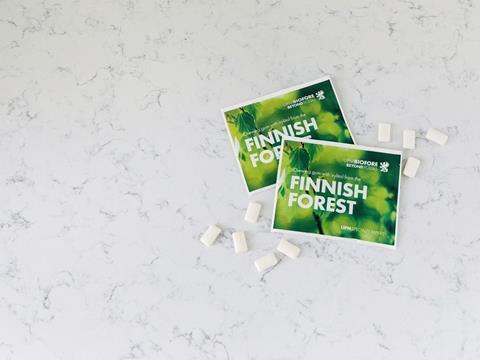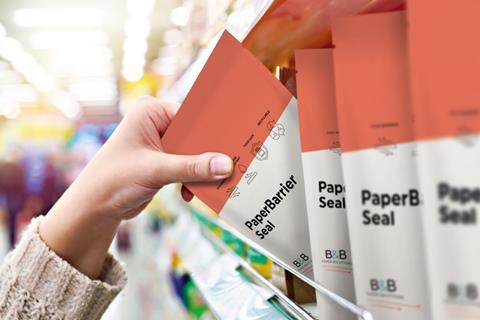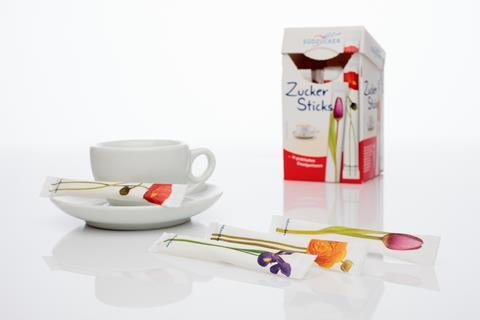As the industry searches for alternatives to plastic packaging, the focus often falls on paper to provide a more sustainable solution. But plastics offer excellent barrier properties which paper does not automatically have. So how can these barriers be added? Elisabeth Skoda explores some of the recent developments in barrier properties for paper packaging together with some industry experts.
Striking a balance

Paper itself as a packaging material doesn’t come with any mentionable barrier properties, so they need to be built by using additional treatments, typically by adding barrier coatings either in the paper-making or converting process.
“It’s all about finding the balance between required functionality – both barrier and strength –and guaranteeing a sustainable end of life in existing recycling infrastructure, while passing all the required product safety criteria,” says Janne Varvemaa, Director, Products and Technology at UPM Specialty Papers.
“The solution also needs to be reasonable in terms of total cost of ownership, although consumer preference seems to favour fibre-based packaging, thus creating some top-line growth opportunity.”
Commercialization can also prove challenging, as he points out.
“Pretty much anything is possible on a lab scale, but upscaling solutions that fulfil the functionality and circularity and cost criteria is a key challenge. Sometimes the main challenges and limitations stem from the status quo – it requires effort to challenge the existing packaging and related machinery design as well as barrier requirements that are sometimes over-engineered. Also, regulation is constantly moving, and predictability, as well as reduced complexity, would be needed to set a clear direction for the solution development.”
Christoph Wachter, Director Flexible Packaging Paper Division, Koehler Paper, agrees that plastic composites offer great barriers but that these aren’t always necessary for every product, so it’s important to define what’s necessary. He also points out the fact that functionality on machines has to be addressed.
“The paper without laminates has to run through the same packaging lines as plastic laminates. This is the first major hurdle that can be checked very quickly, even without already knowing which barrier function has to be used. Here it is important to define the necessary functions together and to select a suitable paper or to develop it together.”
From their physical characteristics, paper and plastic are quite different materials, and the key differences include such properties as moisture barrier, stretchability, porosity or sealability, as Eric Valette, Director Innovation BU Flexibles at Coveris, points out.
“This is important when designing the optimal packaging for selected products. That is why switching from plastic to paper is more than just a material change – it pushes the packaging producers to search for a way to close the gap and reach the same functional properties.”
Complementing or replacing plastic packaging
From what our experts are saying it’s becoming clear that tailor-made solutions for each product group are the way forward. They agree that there is a role for a range of different packaging materials, while highlighting the benefits of paper.
Mr Varvemaa points out that both plastic and paper have a role to play in the future – plastics are great in terms of functionality and versatility, while paper has an edge in sustainability: it is a renewable raw material and has a globally wide-spread, well-working recycling infrastructure, to mention some sustainability benefits. Sometimes the working solution comes from combining the best of both materials.
“The chosen material needs to fit the purpose of protecting the product. I see many opportunities for increasing the use of paper but ultimately, it’s the brand owners’ commitments and choices that drive the development of packaging,” he adds.
There are two main directions that have been driving the development of alternative, more environmentally friendly packaging materials: the need to replace hard-to-recycle material and the interest in improving barrier functionality to paper.
“From the perspective of Coveris, it’s not about choosing between paper or plastic, it’s about finding the best, most eco-efficient and best-performing packaging for the respective product - without any limitations in materials,” says Mr Valette.
Mr Wachter sees some limitations for paper, but is optimistic that the material can play a major role as primary packaging.
“Paper is a natural product, it will not be able to deliver every barrier. Composite packaging will also continue to exist for certain purposes. When selecting the packaging solution for food, the focus always has to be on protecting the content. There are numerous paper solutions that can be used today on existing packaging lines without sacrificing efficiency. Numerous secondary packaging products made of paper in the food sector are already established in the markets worldwide. The first primary packaging, for example for chocolate or nuts, is currently being launched on the market. We assume that in the near future, the majority of primary packaging will be made of paper.”
Focus on food safety – and navigating the regulation jungle
Keeping food safe throughout its journey is of key importance, not only with primary packaging, but also with secondary and tertiary packaging.

“During transport and storage, products require specific protection against potential migration of harmful substances coming from the external packaging. For example, at Coveris we are constantly increasing the usage of recycled material for secondary and tertiary packaging which is best practice for the environment. But these materials are not suitable for direct food contact and do not ensure a natural barrier against e.g. mineral oils (MOAH and MOSH). As a result, we need to make sure the primary packaging provides a proper barrier against migration from recycled content materials, and corrugated cardboard which is used for secondary or tertiary packaging,” adds Mr Valette.
Diverging regulations for recyclability and food contact in different countries can prove challenging, as can a lack of definition of what paper recyclability means.
“There is not yet a unique method to assess the recyclability of paper, and no harmonized regulation to demand it, even in the EU. Most of the time the packaging is designed to be launched in several countries at the same time and the main challenge is to make sure the solution fulfils individual regional recycling requirements,” say Mr Valette.
A major challenge when developing new barrier concepts is the regulation of the different countries with regard to the ingredients of products that come into direct contact with food, as well as individual requirements from large companies and corporation, as Mr Wachter points out.
“It is important that the barriers that we develop do not affect the recyclability of the paper, because that is the main argument for the material. When it comes to our flexible packaging solutions, we speak of ‘100% paper’ because only a dispersion is applied during paper production. It fulfils the barrier function, but is not made of PVC, PVDC or a conventional laminate and is harmless for direct contact with food.”
Mr Varvemaa adds that recyclability as an end-of-life solution for greasy and moist foods can be challenging due to food residues. In these types of applications composting would be the most feasible sustainable end-of-life solution.
“Non-food applications are easier, although naturally there is certain regulation (e.g. toys) that needs to be taken into account in product design. Otherwise, similar design criteria exist: balancing functionality, circularity, and financial feasibility.”
He agrees that the lack of a global recyclability guideline causes challenges.
“Initiatives such as 4evergreen are working hard to create certification systems that cover wide geographic areas and consider the development of novel packaging solutions and the changing composition of recycled paper and board streams, as consumption of newspapers, magazines and other printing papers is declining.”
Potential for the future
Asked about development potential for paper packaging, Mr Wachter highlights the fact that a barrier concept against oxygen, saturated and aromatic hydrocarbons and grease has been developed and is already on the market, and that dry and greasy filling goods such as chocolate or muesli therefore pose no problem.

“However, liquids cannot yet be packaged with it. In 2023, we want to introduce a water vapour barrier to the market. This could also be used to pack products such as washing powder or pet food in paper. Various market tests are already underway. The further development of dispersions is aimed at barriers made from bio-based and renewable raw materials.”
Mr Valette sees major growth opportunities for paper packaging.
“Following the market’s demand and global packaging directives, paper packaging is expected to grow further. According to latest research, it will steadily grow by 3.5% and by 2027 it will reach a market value of 493,5 billion USD, according to recent market studies. Our newly created Paper Business Unit already accounts for 30% of total group sales, which confirms this trend.”
In conclusion, Mr Varvemaa highlights the importance of collaboration to achieve all-important sustainability goals, which requires openness, agility and working with new types of partners.
“As an optimist, I would say imagination, or perhaps the lack of it, sets the limits. It’s been shown that even the highest barrier requirements can be achieved with recyclable solutions and creating packaging designs that utilize this opportunity as a complete or partial solution is now possible. In my opinion, a perfect drop-in solution to replace plastic with a paper-based solution rarely exists, so co-creation is key.”
If you liked this article, you might also enjoy:
McKinsey on whether or not on-pack sustainability claims affect consumer spending
A deep dive into the most important packaging sustainability trends and solutions
















No comments yet